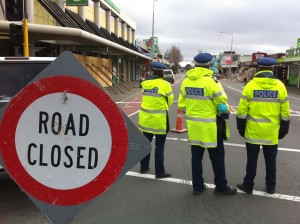 The recent earthquake in New Zealand’s second largest city, Christchurch, rated a bone-rattling 7.1 on the Richter scale – the same as San Francisco’s 1989 quake and larger than Haiti’s January quake. It occurred along a previously unknown fault line and sent sleeping residents into full earthquake defence mode.
The recent earthquake in New Zealand’s second largest city, Christchurch, rated a bone-rattling 7.1 on the Richter scale – the same as San Francisco’s 1989 quake and larger than Haiti’s January quake. It occurred along a previously unknown fault line and sent sleeping residents into full earthquake defence mode.
Animals affected by the quake also suffered 40 seconds of thunderous rocking and rolling. Many animals simply fled, and 497 cats and dogs were registered with the Canterbury SPCA Track-A-Pet service, from when the quake struck on the fourth, to the 30 September (compared to just 81 in the previous year). Cats made up 90 per cent of this total because they were free to just ‘take off’. Dogs were less able to flee because of their confinement. Just two people were injured, no-one was killed, and a few animals suffered minor injuries from falling objects.
Happily, 246 animals were reunited with their owners in September alone, either by using the SPCA Track-A-Pet service or by returning home voluntarily.
In the days after the quake, some dogs were described as unusually clingy. One clinic has treated a number of cats and dogs for anxiety-related complaints such as not sleeping, and barking at minor disturbances such as the rumbling of passing trucks which, prior to the quake, would have been ignored. Many animals have refused to use the bed they were asleep on, or enter the room they were in, when the quake struck. A pair of kune kune pigs hit the headlines because they were too terrified to return to the pen they were in when the quake struck, and their owner was forced to rehouse them in a new paddock!
Owners whose homes were affected by leaking sewage, lack of water, or structural damage had to vacate the buildings and move into motels, community centres, or with family and friends. Some accommodated their pets in boarding kennels and catteries, or took them to the council’s Animal Control Centre. The cost of care for lost pets has largely been met by massive fundraising efforts, including $23,000 from one large multinational pet store, Animates. This generosity enabled the SPCA to accommodate, at no cost, animals whose owners were displaced, and also assisted with the treatment of injured animals (irrespective of whether it was directly or indirectly quake related).
Domestic pets were affected more than livestock, presumably because in an urban environment the noise and motion generated by hard structures is more than in open paddocks.
Canterbury SPCA’s website published advice on how to manage pets during the emergency, and for potential events in the future. Their disaster plan gives instructions about creating a Pet Disaster Survival Kit, which includes a carrier or crate, a lead, blanket, food and water for seven days (plus bowls and tin opener), litter tray or poo bags, medication, and identification. They suggest photos of the pet are a good idea, as, of course, is microchipping.
Aftershocks continue to rock the area.
LYNDA MELLOR

